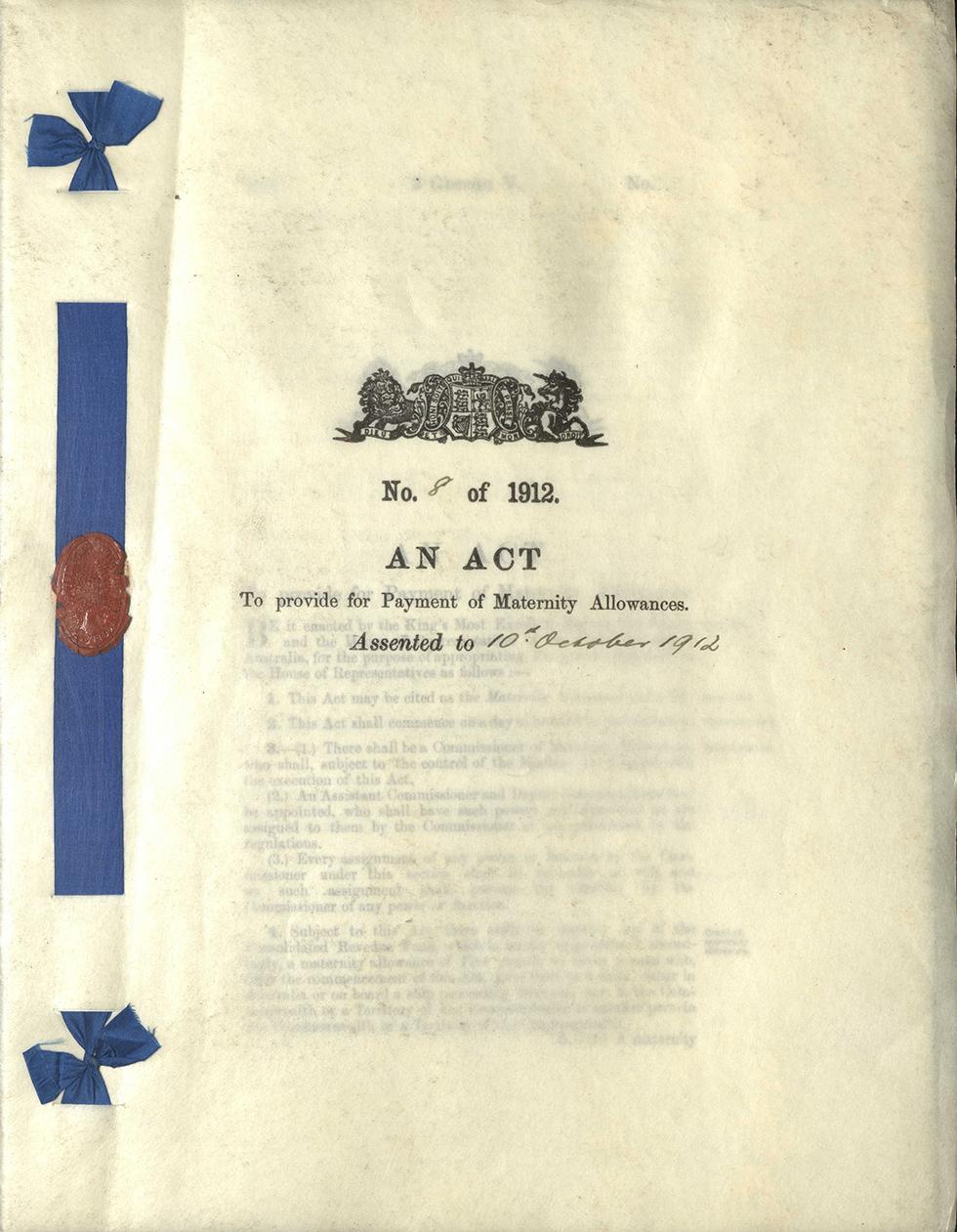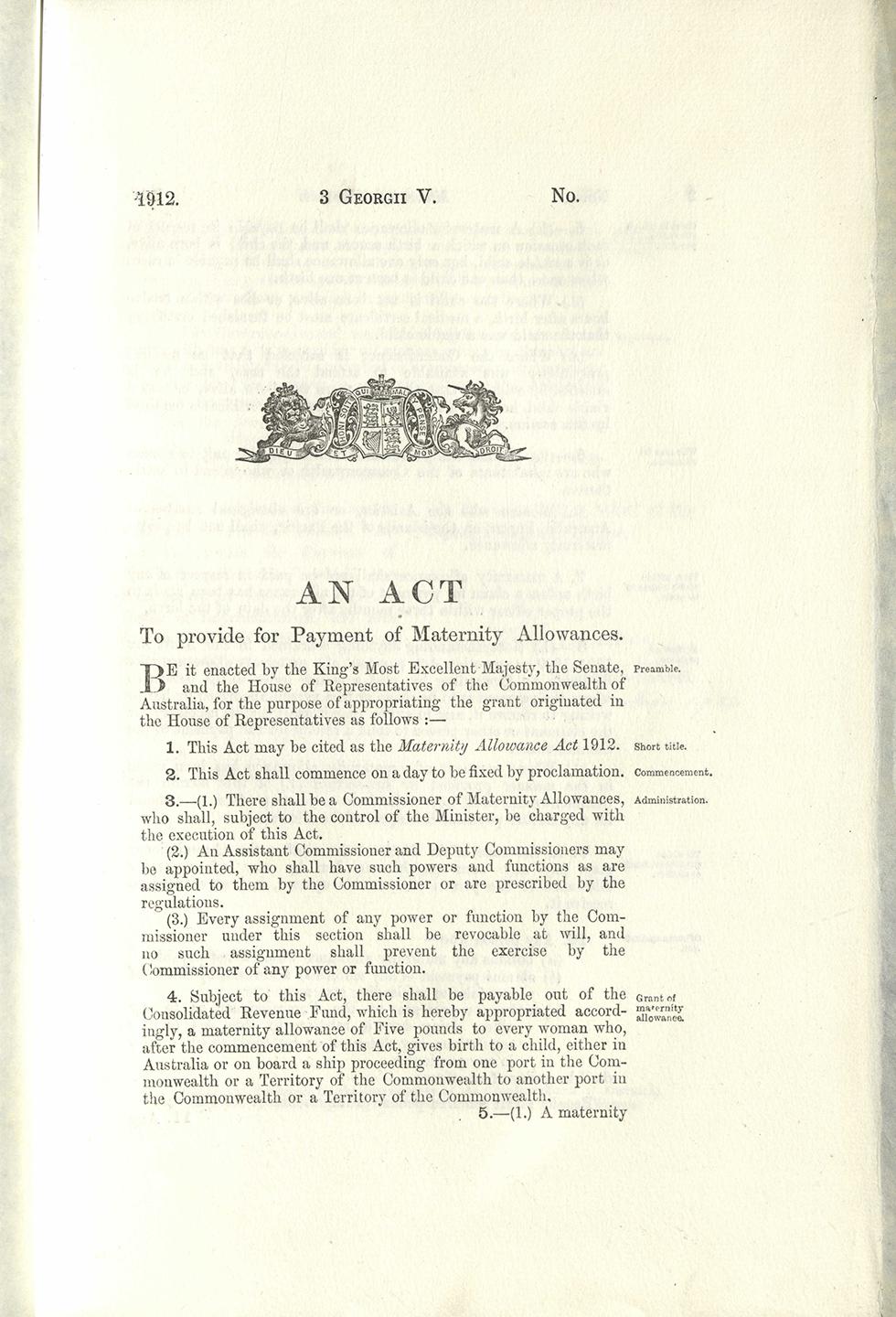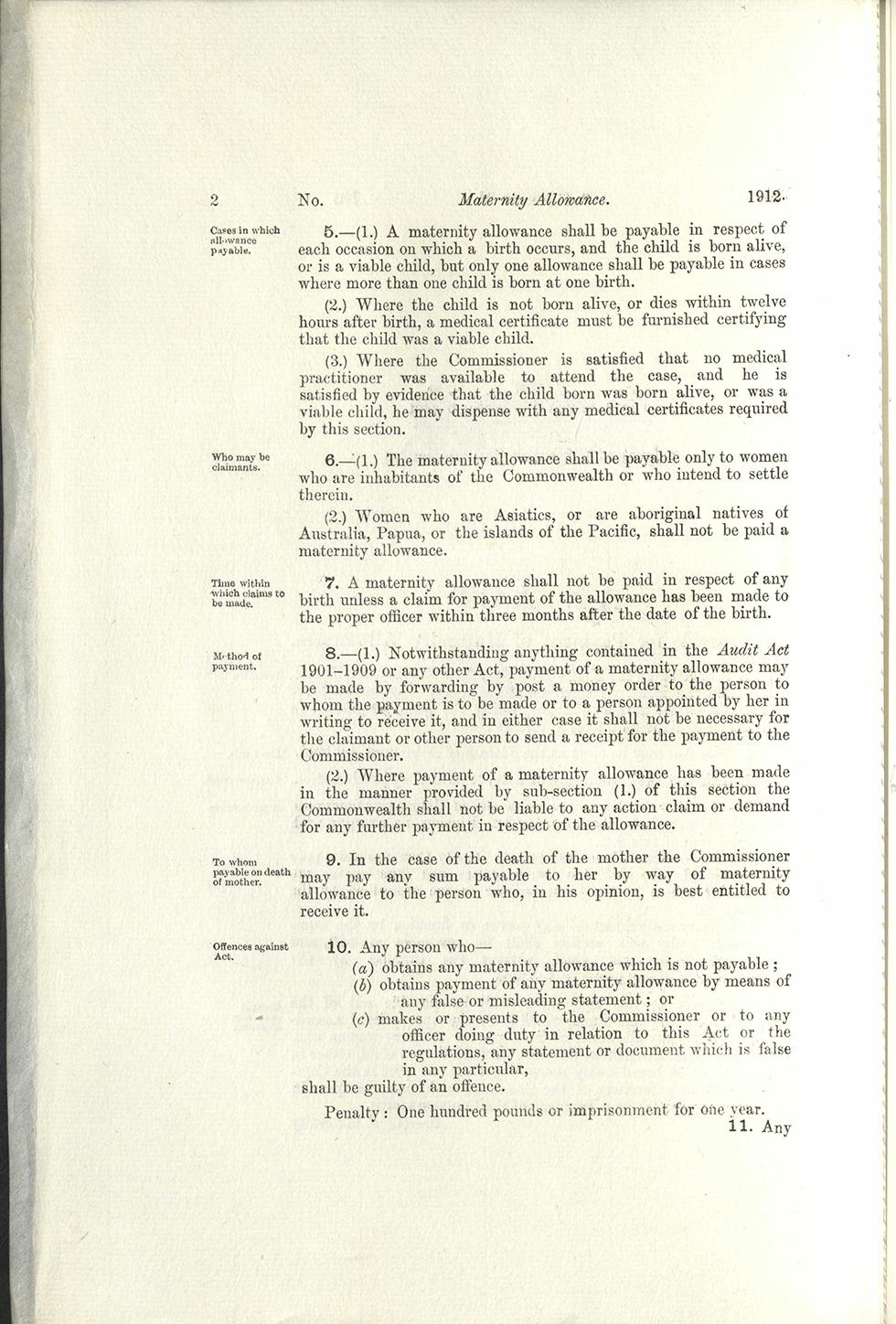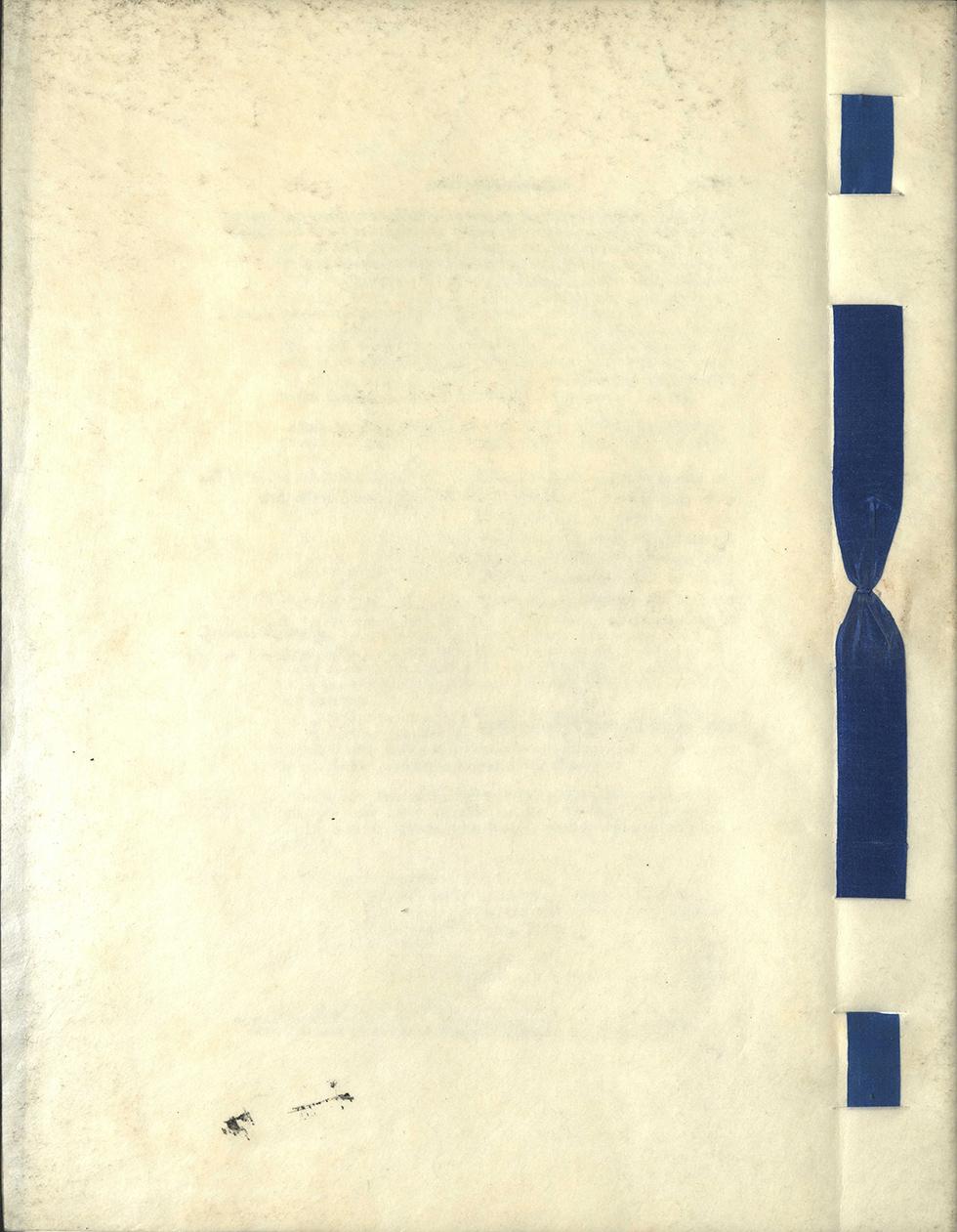




Aboriginal and Torres Strait Islander people should be aware that the National Archives' website and collection contain the names, images and voices of people who have died.
Some records include terms and views that are not appropriate today. They reflect the period in which they were created and are not the views of the National Archives.






[page 1]
[The paper is bound with blue ribbon and a red wax seal. The British coat of arms is printed in the centre.]
No. [handwritten] 8 [end handwritten] of 1912.
AN ACT
To provide for Payment of Maternity Allowances.
Assented to [handwritten] 10th October 1912 [end handwritten]
[end page 1]
[page 2]
1912 3 Georgii V. No.
[British coat of arms is printed in the centre]
AN ACT
To provide for Payment of Maternity Allowances.
Preamble.
Be it enacted by the King’s Most Excellent Majesty, the Senate, and the House of Representatives of the Commonwealth of Australia, for the purpose of appropriating the grant originated in the House of Representatives as follows :-
Short Title.
Commencement.
Administration.
(2.) An Assistant Commissioner and Deputy Commissioners may be appointed, who shall have such powers and functions as are assigned to them by the Commissioner or are prescribed by the regulations.
(3.) Every assignment of any power or function by the Commissioner under this section shall be revocable at will, and no such assignment shall prevent the exercise by the Commissioner of any power or function.
Grant of Maternity Allowance.
[end page 2]
[continued on page 3]
2 No. [italicised] Maternity Allowance. [end italicised] 1912.
Cases in which allowance payable.
(2.) Where the child is not born alive, or dies within twelve hours after birth, a medical certificate must be furnished certifying that the child was a viable child.
(3.) Where the Commissioner is satisfied that no medical practitioner was available to attend the case, and he is satisfied by evidence that the child was born alive, or was a viable child, he may dispense with any medical certificates required by this section.
Who may be claimants.
(2.) Women who are Asiatics, or are aboriginal natives of Australia, Papua, or the islands of the Pacific, shall not be paid a maternity allowance.
Time within which claims to be made.
Method of payment.
(2.) Where payment of a maternity allowance has been made in the manner provided by sub-section (1.) of this section the Commonwealth shall not be liable to any action claim or demand for any further payment in respect of the allowance.
To whom payable on death of mother.
Offences against Act.
shall be guilty of an offence.
Penalty: One hundred pounds or imprisonment for one year.
[end page 3]
[continued on page 4]
1912. [italicised] Maternity Allowance. [end italicised] No. 3
Aiding and abetting offences.
Regulations
I HEREBY CERTIFY that the above is a fair print of the Bill intituled ‘An Act to provide for Payment of Maternity Allowances,” which has been passed by the Senate and the House of Representatives, and that the said Bill originated in the House of Representatives.
[signature] Walter A. Gale [end signature]
[handwritten] Clerical Assistant for [end handwritten] Clerk of the House of Representatives
In the name and on behalf of His Majesty, I assent to this Act.
[signature] Denman [end signature]
Governor-General
[handwritten] 10th October 1912 [end handwritten]
[Footnote] Printed and Published for the GOVERNMENT of the COMMONWEALTH OF AUSTRALIA by ALBERT J. MULLETT, Acting Government Printer for the State of Victoria.
[end page 4]
[page 5 is blank, with the blue ribbon binding the Act together]
The Maternity Allowance Act 1912 provided a payment of five pounds to new mothers—the equivalent of two weeks wages.
Mothers of Indigenous Australian, Asian, Pacific Islander or Papuan (including modern day Papua New Guinea) heritage were not eligible for this payment.
A maternity allowance was an election commitment of the Fisher Government, designed to lower infant mortality rates and to increase the white population of Australia. The allowance was intended to cover medical costs.
Learn how to interpret primary sources, use our collection and more.
